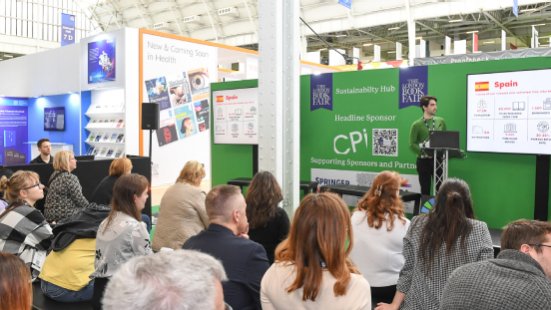Sustainable Exhibitions: RX’s Guide to Embracing the Green Canvas
Here at RX, as we understand our urgent environmental challenges further, the focus on creating more sustainable exhibitions has become paramount within our events industry business.
At RX we are serious about sustainability, which is why we have formed a dedicated Sustainability Council and we align with the science to limit climate change beyond 1.5 degrees. By 2030, we aim to cut our greenhouse gas emissions in half and achieve net zero by 2040 and we’ve already made a good start!
In this article, we delve into various aspects of sustainable exhibitions, and how we can create a sustainable future using sustainable alternatives covering topics such as costs, organisational challenges, comparative analysis, impacts, carbon footprints and future prospects. From understanding the definition of a 'sustainable exhibition' to identifying best practices.

How can businesses benefit from participating in or sponsoring sustainable exhibitions?
Businesses can gain several benefits from participating in or sponsoring sustainable exhibitions:
Benefits
Improved Brand Image
Increased Visibility
Networking Opportunities
Learning Opportunities
Positive Impact
Explanation
Participating in sustainable exhibitions can enhance a company's reputation, showing it to be socially responsible and conscious of environmental issues.
Exhibitions can offer businesses the opportunity to engage with potential customers and stakeholders who share similar values, therefore, increasing visibility and awareness.
These events can serve as a platform for networking, potentially leading to collaborations, partnerships, or new business opportunities.
Companies can learn more about sustainability trends, technologies, and strategies that could be relevant to their operations or products.
By sponsoring these exhibitions, businesses can help support educational initiatives and raise awareness about important environmental issues, thereby contributing to their corporate social responsibility goals.
Thus, involvement in sustainable exhibitions can be a valuable strategy for businesses looking to align themselves with environmental and sustainability objectives.
The series of questions discussed the various aspects of sustainable exhibitions, from costs and challenges to their potential impacts and future evolution. The cost of hosting such an exhibition in the UK for example, is variable, depending largely on factors such as venue, scale, and content. The challenges of hosting include sourcing sustainable materials, managing waste, and ensuring accessibility.
A comparison of sustainable exhibitions was made on the basis of their impact and audience reach, with a mention of various successful examples in the UK. Organising a sustainable exhibition with minimal environmental impact involves careful planning, sourcing local and sustainable materials, reducing energy consumption, and managing waste responsibly.
Understanding the meaning of 'sustainable exhibition' can indeed influence the cost of organising one, as it determines the methods and materials used. Misunderstandings of the concept can lead to greenwashing, inauthentic practices, and ineffective communication of environmental messages. The understanding of sustainable exhibition can vary across different cultures or regions, influenced by social, environmental, and economic contexts.
The impact of sustainable exhibitions extends beyond their environmental message to include educational, social, and economic effects. They can raise awareness about environmental issues, incorporate technology to enhance the visitor's experience, and stimulate local economies and businesses. They can also influence policy-making and provide businesses with opportunities for enhancing their brand image and learning about sustainability trends.
The future of sustainable exhibitions is likely to be influenced by ongoing technological developments, shifts in public awareness and attitudes, and the evolving challenges of the environmental crisis. There is the potential for greater integration of digital and interactive technologies, wider collaboration across sectors, and an even stronger focus on sustainability in all aspects of exhibition design and management.
